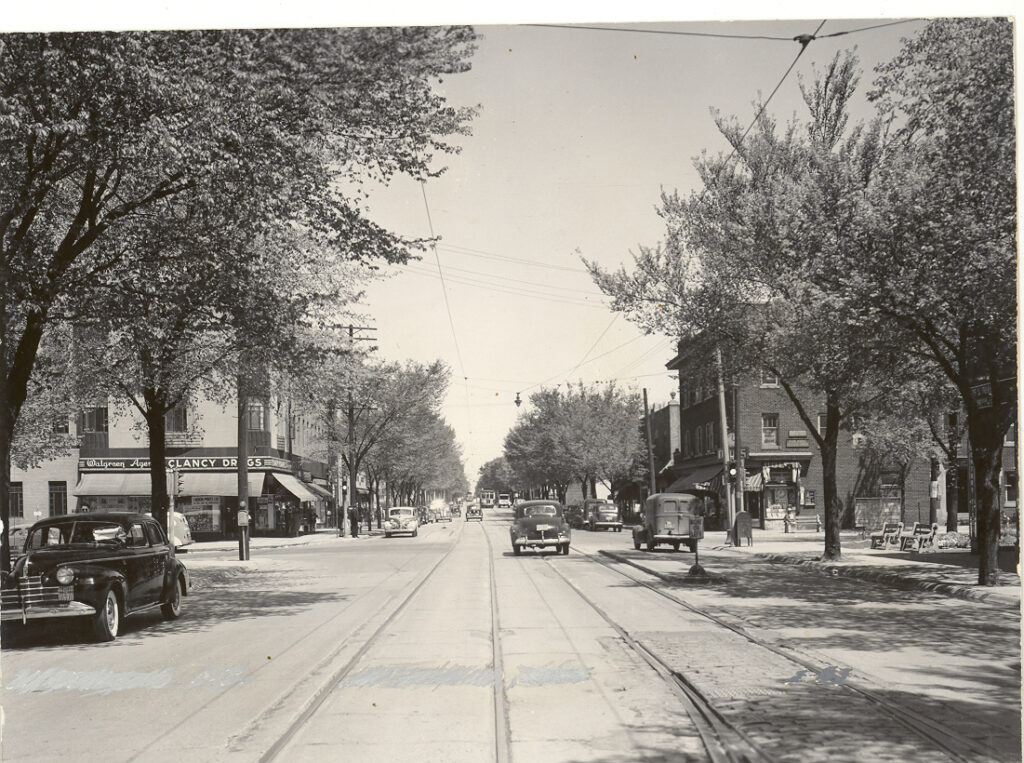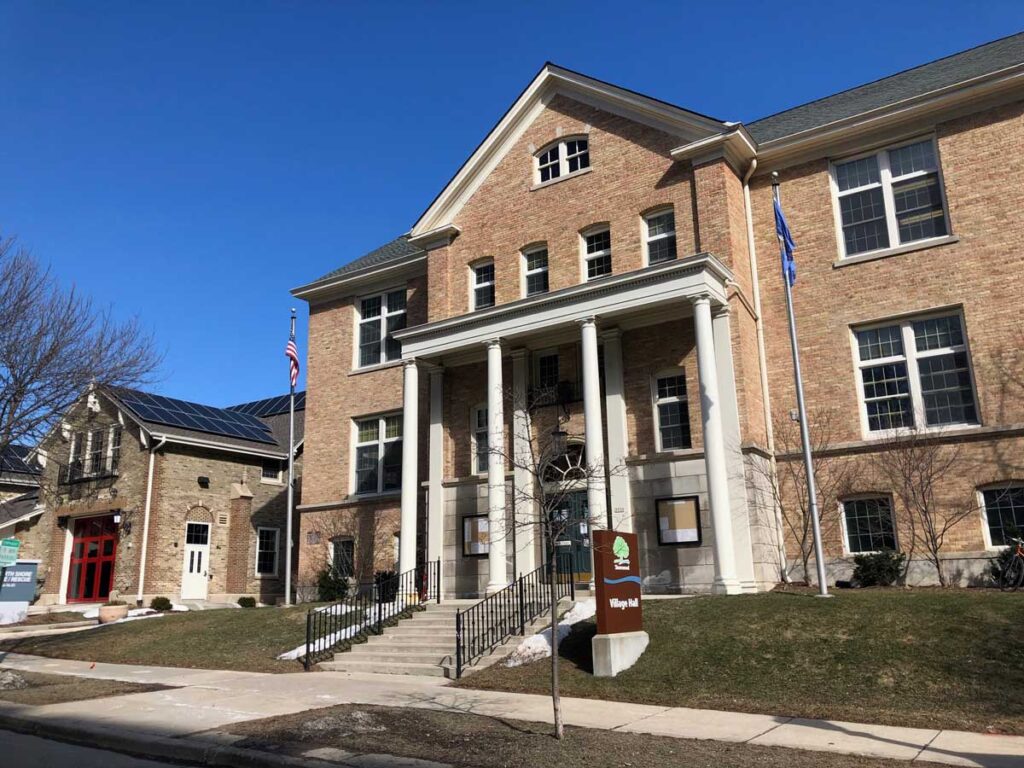Village History
Between the Lake and the River
Originally, the area we now know as Shorewood was hunting and fishing grounds for the Sioux and Algonquin Indians. A branch of the Sauk Trail, which ran from current Green Bay to Milwaukee, passed through the area. Two burial mounds were uncovered in current Hubbard Park in the early 20th century.
In 1832, the United States government purchased the land east of the Milwaukee River from the Menomonee Indians. Speculators and a few farmers acquired the land. The natural resources of water power and timber attracted settlers who struggled to establish industries such as saw and grist mills and a cement mill on the banks of the Milwaukee River. The area was part of the Town of East Milwaukee.

Incorporation
By the beginning of the 20th century, the area had become a recreational destination. People arrived by boat, train and street car to visit the amusement parks in the southwest corner of the village. Summer homes and a country club dotted the lake front.
However, people who had begun to settle in the area were dissatisfied with the Town of Milwaukee’s lack of attention to road improvement and basic services and felt they could make better use of the taxes paid by the thriving amusement park.
In August, 1900, the Village of East Milwaukee was incorporated with a population of 300. The small village grew to 1,255 by 1913.Cement sidewalks were added in 1910; street signs and gas mains in 1911. The first paved street was Richland Court (1913).
Shorewood
In 1917, the name was changed to Shorewood to encourage potential residents and businesses to view the Village as separate from the city of Milwaukee. New schools, churches and village infrastructure were quickly constructed to meet community needs. An explosion of growth in the 1920s caused the population to reach 13,479 by 1930; peak population was 16,199 in 1950.
Today, there is a stable population of about 13,500. Measuring only a mile by a mile-and-a-half, the Village is the most densely populated community in the State of Wisconsin.

Community Services
The current Shorewood Village Hall, constructed in 1908, was originally a four-room school. In 1916 the Village purchased the building to house its offices.
The building has had a number of additions and renovations but still reflects its architectural history. It was named to the National Register of Historic Places in 1984. (Add pictures of Village Hall in 1920 and 2023)
The Village Board was originally composed of six trustees and a Village president who assumed the full responsibility and management of the community. The growth of the Village in the 1920’s caused the Board to hire a Village Manager in 1928. The Village President and Board of Trustees appoint the Village Manager, who is responsible for implementing Board policies and handling day-to-day operations.
Public Works equipment was originally housed in garages next to Village Hall. Construction of a separate Public Works Department on Morris Boulevard began in 1928.
The Village funded a Librarian and appointed a library board as early as 1903. From the early 1900’s until 1965, the library occupied various locations including the basement of the Village Hall and five different storefront locations. The Village built its first full service library in the current location in 1965. In 2003 the library was completely renovated and expanded to include the Village Center, Historical Society, Health Department, and Senior Resource Center.
The Shorewood Police Department was organized in 1920 and eventually shared a building with the Fire Department in the Safety Building on Murray Avenue. It moved to its own building on Wilson Drive in 2017.
The Shorewood Fire Department was organized in 1929 and housed in the new Safety Building on Murray Avenue which is now a North Shore Fire Department station.
The first Health Officer in the Village was appointed in 1901 and a Health Department was organized in 1918. A school nurse was hired and a program for child health care was developed. In the 1930’s, the department received national recognition for its measles- surveillance program. In 1996, the Shorewood Health Department merged with other north shore communities to form the North Shore Health Department.
